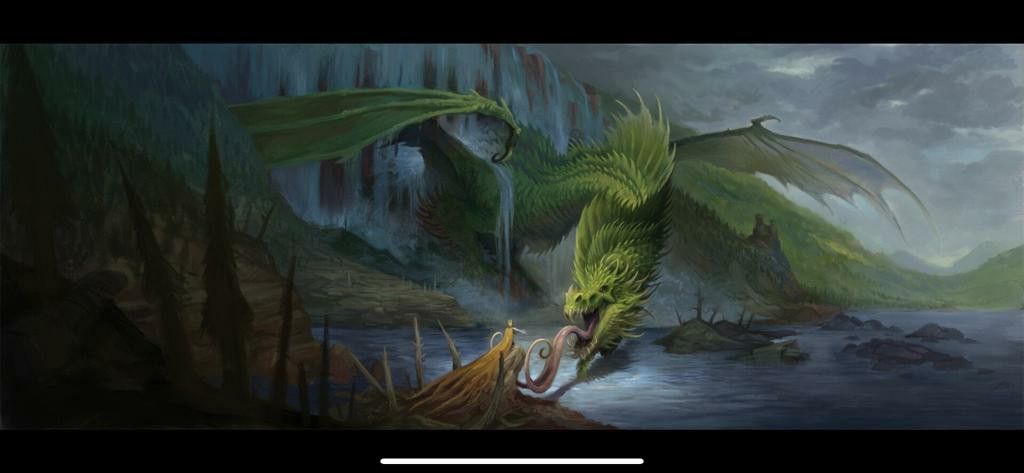Green Dragon, Ancient
Gargantuan dragon, lawful evil
Armor Class 21 (natural armor)
Hit Points 385 22d20+154
Speed
40ft
Fly: 80ft
Swim: 40ft
Saving Throws Dex +8, Con +14, Wis +10, Cha +11
Skills Deception +11, Insight +10, Perception +17, Persuasion +11, Stealth +8
Damage Immunities poison
Condition Immunities Poisoned
Senses blindsight 60 ft., darkvision 120 ft., passive Perception 27
Languages Common, Daconic
Challenge 22 (41,000 XP)
Amphibious. The dragon can breathe air and water.
Legendary Resistance (3/Day). If the dragon fails a saving throw, it can choose to succeed instead
Actions
Multiattack. The dragon can use its Frightful Presence. It then makes three attacks: one with its bite and two with its claws.
Bite. Melee Weapon Attack: +15 to hit, reach 15 ft., one target. Hit: 19 2d10+8 piercing damage plus 10 3d6 poison damage.
Claw. Melee Weapon Attack: +15 to hit, reach 10 ft., one target. Hit: 22 4d6+8 slashing damage.
Tail. Melee Weapon Attack: +15 to hit, reach 20 ft., one target. Hit: 17 2d8+8 bludgeoning damage.
Frightful Presence. Each creature of the dragon’s choice that is within 120 feet of the dragon and aware of it must succeed on a DC 19 Wisdom saving throw or become Frightened for 1 minute. A creature can repeat the saving throw at the end of each of its turns, ending the effect on itself on a success. If a creature’s saving throw is successful or the effect ends for it, the creature is immune to the dragon’s Frightful Presence for the next 24 hours.
Poison Breath (Recharge 5-6). The dragon exhales poisonous gas in a 90-foot cone. Each creature in that area must make a DC 22 Constitution saving throw, taking 77 22d6 poison damage on a failed save, or half as much damage on a successful one.
Legendary Actions
The dragon can take 3 legendary actions, choosing from the options below. Only one legendary action option can be used at a time and only at the end of another creature’s turn. The dragon regains spent legendary actions at the start of its turn.
Detect. The dragon makes a Wisdom (Perception) check.
Tail Attack. The dragon makes a tail attack.
Wing Attack (Costs 2 Actions). The dragon beats its wings. Each creature within 15 feet of the dragon must succeed on a DC 23 Dexterity saving throw or take 15 2d6+8 bludgeoning damage and be knocked Prone. The dragon can then fly up to half its flying speed.




















Comments